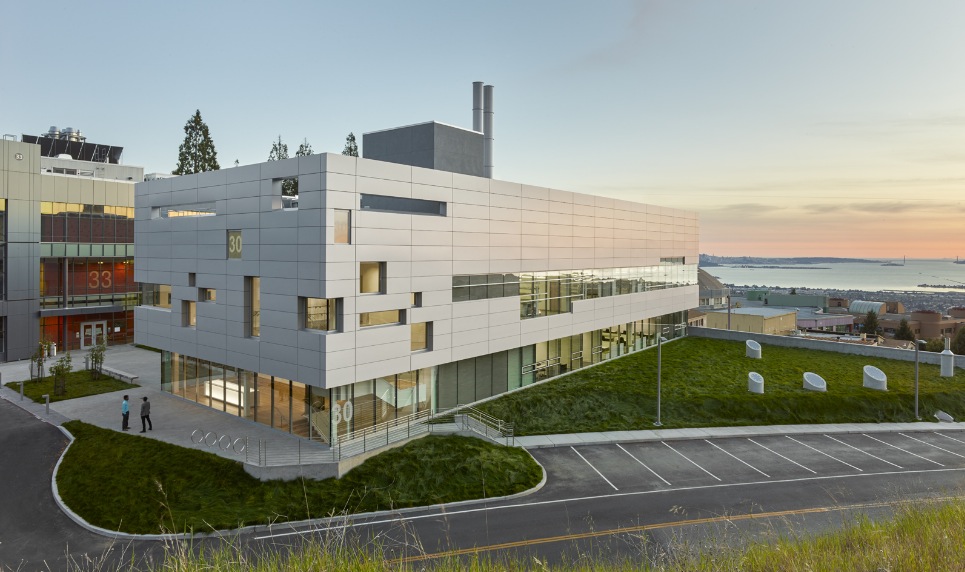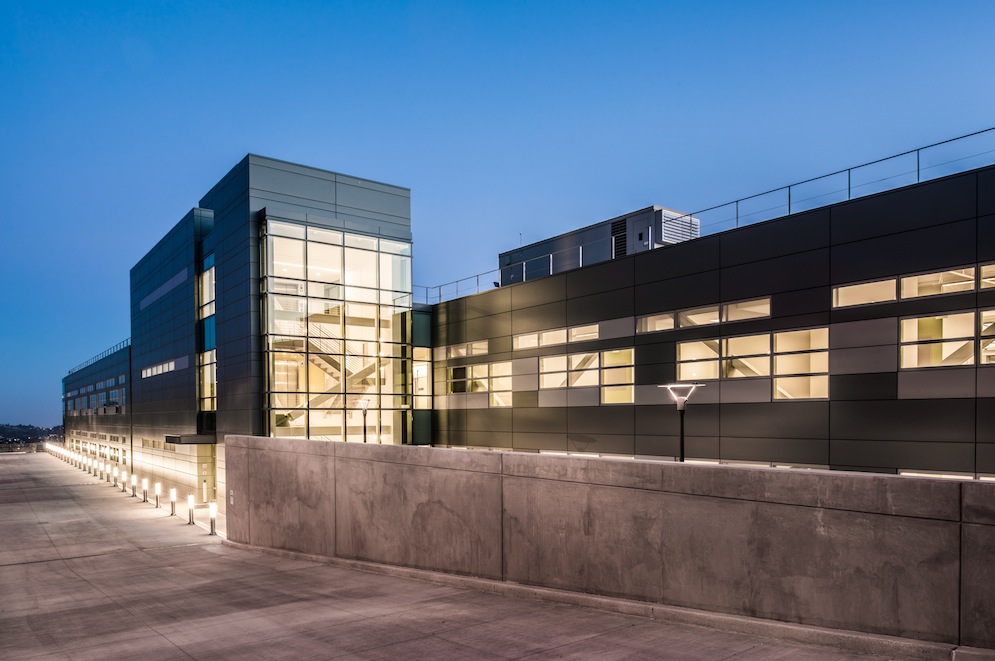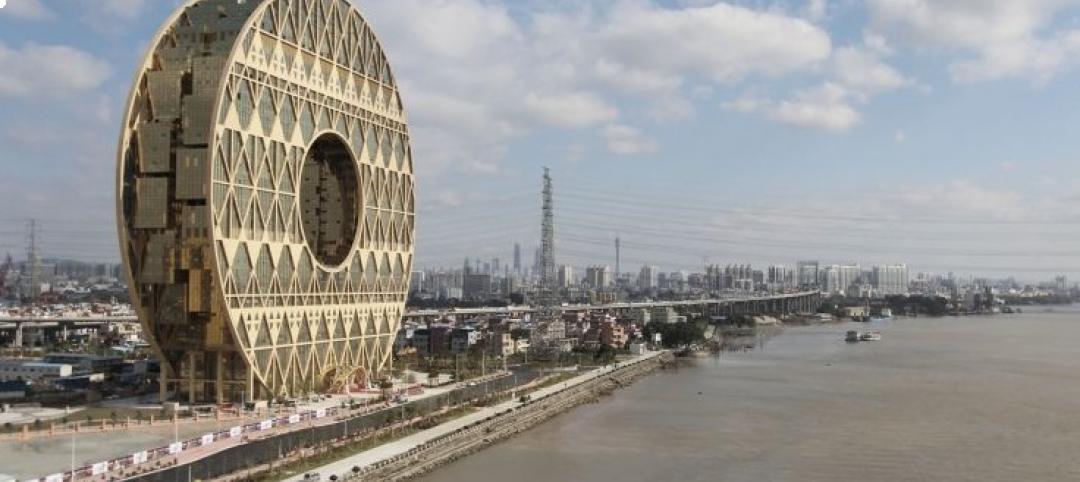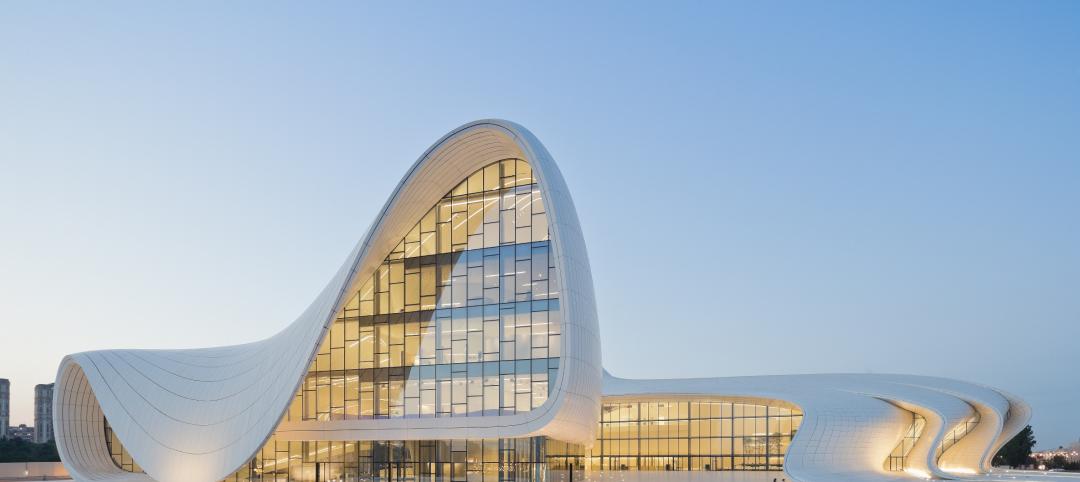Engineering firm Burns & McDonnell is converting a shuttered medical center in Independence, Mo., to a central utility plaza that will unite the city’s water, electric, and wastewater administrative and customer services under one roof. The city’s Department of Power & Light intends to use the building as a public education and outreach showcase for sustainable best practices.
Upon completion next September, the 45,000-sf renovated building will start reducing its annual energy costs by 55% with high-efficiency LED lighting and upgraded HVAC systems and controls. Water usage will be cut by 40%. A rooftop solar array and wind turbine are expected to generate 13% of the three-story building’s electricity needs, says Leon Daggett, the utility department’s director.
The $8.9 million project, which is pursuing LEED Platinum certification, will have six electric vehicle chargers. The renovation will retain 95% of the existing structure and divert 75% of C&D waste from landfill.
Government projects like this are no longer the exception, particularly at the federal level. For its recently completed $59 million Solar Energy Research Center at Lawrence Berkeley National Laboratory, the Department of Energy instructed its Building Team—led by SmithGroupJJR (architect and master planner) and McCarthy Building Companies (general contractor)—to create carbon-neutral sources of energy.
Known as Chu Hall, the 39,000-sf center’s renewable energy sources include solar hot water panels and PV arrays. Passive energy features include a heat-recovery system, high-efficiency condensing boilers and chillers with variable frequency drives, an evaporative pre-cooling hybrid system, and individual terminals that signal when a window on an office floor is open.
A recent military project led by design firm Leo A Daly—the 577,988-sf, $410 million Irwin Army Community Hospital Replacement Facility, at Fort Riley, Kan.—achieved LEED Silver certification. “Federal healthcare clients are interested in pursuing energy reductions from smart lifestyle cost-efficient decisions. They’re not interested in science projects,” quips Rich Onken, AIA, EDAC, Senior Project Manager. He says energy modeling has become invaluable for determining life cycle costs for federal projects.
Leo A Daly is finding that state government clients are also stepping up to the challenge, says Cindy McCleary, AIA, NCARB, LEED AP, Market Sector Leader–Regional Government for the firm’s Minneapolis office. She notes that projects for the state of Minnesota and the Minnesota State Colleges and Universities must now achieve 70% better than code-minimum energy use on new projects. The state’s goal: 100% carbon neutrality by 2030.
 Skidmore, Owings & Merrill and Rensselaer Polytechnic Institute co-developed an “active modular phytoremediation” system, which filters indoor air through a wall of hydroponic plants to detoxify the air. The system was installed at the Public Safety Answering Center II in the Bronx, N.Y. “This takes the concept of ferns in offices and multiplies it by 200,” says Nicholas Holt, AIA, LEED AP BD+C, a Director in SOM’s New York office. Image courtesy SOM.
Skidmore, Owings & Merrill and Rensselaer Polytechnic Institute co-developed an “active modular phytoremediation” system, which filters indoor air through a wall of hydroponic plants to detoxify the air. The system was installed at the Public Safety Answering Center II in the Bronx, N.Y. “This takes the concept of ferns in offices and multiplies it by 200,” says Nicholas Holt, AIA, LEED AP BD+C, a Director in SOM’s New York office. Image courtesy SOM.
Nicos Katsellis, RA, LEED AP BD+C, EDAC, GGP, Director of Operations for Leo A Daly’s Los Angeles office, says that, as energy-efficiency and sustainability standards keep ratcheting up, early collaboration among team members helps set priorities to develop holistic solutions.
Scott Lawson, Vice President for Clark Construction, in Los Angeles, couldn’t agree more. “Gathering the Building Team early is absolutely essential to understanding what the client wants and formulating a strategy,” he says. He points to the 545,000-sf Governor George Deukmejian Courthouse, in Long Beach, Calif., a LEED Gold building that opened in 2013. Lawson says that Johnson Controls, which will manage the building for 35 years, was willing to approve certain higher-cost products—like LED lighting instead of CFLs, and terrazzo flooring instead of carpeting—based on their long-term maintenance and sustainability.
The project’s unique performance-based infrastructure contract guarantees that the courthouse will be usable and functional for its intended purposes. Otherwise, the state, which owns the building but paid no upfront construction costs, will receive discounts on its annual payments to a consortium that includes Clark’s design-build subsidiary, AECOM, Johnson Controls, and the developer, Long Beach Judicial Partners.
NAVIGATING GOVERNMENT REGULATORY AND BUDGETARY CONSTRAINTS
Government work can also be a puzzle for AEC firms. Federal projects are subject to budgets and mandates that can work sometimes against sustainable design. Skidmore, Owings & Merrill recently completed the Air Force Academy’s Center for Character and Leadership Development. The building had been designed for LEED Platinum but was scaled back to LEED Silver because Congress at the time prohibited any Department of Defense construction to exceed that level, according to SOM’s Nicholas Holt, AIA, LEED AP BD+C.
A DOE project, the 139,800-sf Computational and Research Theory Facility at the University of California, Berkeley, is situated on a fault line, with its broadest elevation facing west—not exactly optimal for daylighting or solar power. Designer Perkins+Will addressed this problem by specifying a solar shading system that operates from noon to 3 p.m., says P+W Architect Kase Macosko. The building uses natural air to cool the data center’s supercomputers. Macosko says P+W and engineer Thornton Tomasetti focused on minimizing the amount of energy used to run the computers.
 Solar Energy Research Center at Lawrence Berkeley National Laboratory. Image courtesy SmithGroupJJR.
Solar Energy Research Center at Lawrence Berkeley National Laboratory. Image courtesy SmithGroupJJR.
Related Stories
| Jul 1, 2014
China's wild circular skyscraper opens in Guangzhou [slideshow]
The 33-story Guanghzou Circle takes the shape of a giant ribbon spool, with the floor space housed in a series of boxes suspended between two massive "wheels."
| Jul 1, 2014
Hyper-speed rendering: How Gensler turns BIM models into beauty shots in seconds
In search of a fast rendering solution, Gensler looked to the gaming and moviemaking industries for the next breakthrough tool: Octane Render.
| Jul 1, 2014
Zaha Hadid's flowing Heydar Aliyev Center named Design of the Year for 2014
The Design Museum's Design of the Year award has been awarded to Zaha Hadid's Heydar Aliyev Center. Hadid is not only the first woman to win the top prize, but the center is the first architectural project to win the overall competition.
| Jun 30, 2014
Research finds continued growth of design-build throughout United States
New research findings indicate that for the first time more than half of projects above $10 million are being completed through design-build project delivery.
| Jun 30, 2014
Arup's vision of the future of rail: driverless trains, maintenance drones, and automatic freight delivery
In its Future of Rail 2050 report, Arup reveals a vision of the future of rail travel in light of trends such as urban population growth, climate change, and emerging technologies.
| Jun 30, 2014
Work starts on Jean Nouvel-designed European Patent Office in the Netherlands [slideshow]
With around 80,000 sm and a budget of €205 million self-financed by the EPO, the complex will be one of the biggest office construction sites ever in the Netherlands.
| Jun 30, 2014
Zaha Hadid's Iraq Parliament complex design marred with controversy
Zaha Hadid's design for the Iraq Parliament was selected, despite placing third in the original RIBA-organized competition.
| Jun 25, 2014
The best tall buildings of 2014
Four high-rise buildings from multiple continents have been selected as the best of their region. The best worldwide tall building will be announced November 6.
| Jun 25, 2014
AIA Foundation launches Regional Resilient Design Studio
The Studio is the first to be launched as part of the AIA Foundation’s National Resilience Program, which plans to open a total of five Regional Resilience Design Studios nationwide in collaboration with Architecture for Humanity, and Public Architecture.
| Jun 25, 2014
Frank Lloyd Wright’s Spring House, Cincinnati’s Union Terminal among 11 Most Endangered Historic Places for 2014
The National Trust for Historic Preservation released its annual list of 11 Most Endangered Historical Sites in the United States for 2014.

















